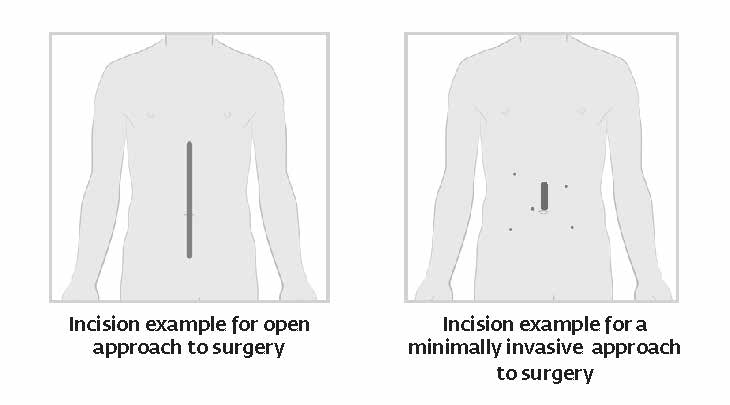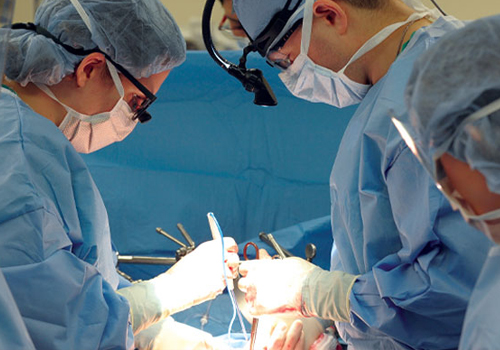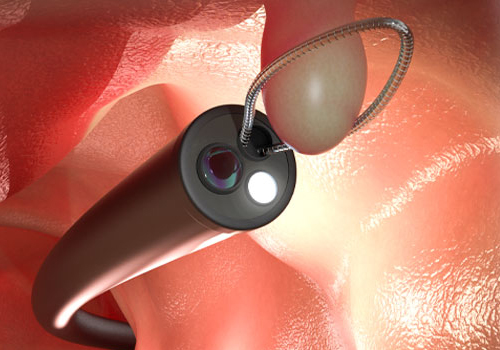Minimally Invasive Surgery
20 Years of Pioneering Robotic Surgery: Cutting-Edge Care, Life-Changing Results
St. Peter's Hospital was the first hospital in the Capital Region to begin using the da Vinci® Surgical System in 2004. Together with Samaritan Hospital, our teams lead the way in the field of robotic surgery.
Why Choose St. Peter's Health Partners for Robotic Surgery?
St. Peter's and Samaritan Hospitals perform the greatest number of robotic procedures in the Capital Region with St. Peter's Hospital ranking in the top 1 percent of total robotic surgery volume across more than 2,400 hospitals in the United States.
In August 2024, St. Peter's Hospital acquired the da Vinci® 5 – almost 20 years after becoming the FIRST hospital to acquire a da Vinci robotic system in the greater Capital Region.
If you need surgery, you want a surgeon and medical team that specializes in advanced techniques and performs complex procedures day in and day out. You can find that world-class care right here in the Capital Region.
Minimally Invasive Surgery at St. Peter's Health Partners
St. Peter's Health Partners' minimally invasive surgical team is a leader in the region as a center of excellence in advanced endoscopic, laparoscopic, robotic, and interventional radiology procedures.
We offer minimally invasive surgery options at St. Peter's Hospital and Samaritan Hospital. Patients have access to board-certified, fellowship-trained surgeons specializing in the most up-to-date techniques.
What is Minimally Invasive Surgery?
There are many surgery options available to patients.
"Open surgery" involves using large incisions to perform a "hands-on" procedure. This form of surgery is being used less and less often, though it is still necessary for certain patients and conditions.
"Minimally invasive surgery" is a term used for surgical approaches that enable even very complex operations to be performed with the least amount of trauma or damage to the body. Performed through small incisions using tiny, high-resolution cameras and specialized surgical instruments, these approaches offer greater surgical precision and, in turn, great benefits to patients.
We use the newest technology to offer a full range of minimally invasive procedures to patients, including advanced endoscopy, robotic surgery, laparoscopic surgery, and interventional radiology. Although "minimal" is in the name, some of these procedures are still major surgery with the potential for serious complications. In some cases, the risks may be lower.
What are the Benefits of Minimally Invasive Surgery?
Less blood loss
Less pain and scarring
Less risk of infection or complications
Shorter hospital stays
Faster recovery times
Improved clinical outcomes
Find a Minimally
Invasive Specialist
Call us
1-888-370-7809
and learn more about minimally invasive surgery at St. Peter’s Health Partners
What are the Types of Minimally Invasive Surgery?


Robotic Surgery
Robotic surgery is performed through several tiny surgical openings instead of large incisions associated with open surgeries.
During robotic surgery, the surgeon sits at a console controlling the instruments while viewing a magnified, high-definition, 3D view of the inside of the patient’s body. From the console, a surgeon’s hand, wrist, and finger movements are translated into smaller, more precise, real-time movements of the instruments attached to the robotic arms. The instruments can rotate more than 360 degrees through the tiny incisions. The surgeon's technique is enhanced by the da Vinci® robot's ability to scale motion and filter any tremor.
This surgical approach often results in better outcomes for patients. Compared to an open surgery, patients who have a robot-assisted surgery are likely to go home sooner; have less pain, scarring, and blood loss; and experience fewer complications, including post-surgical infections.
Some common procedures performed with robotic assistance include hysterectomies and procedures involving prostate cancer, breast cancer, cancer in the female urinary system, colon cancer, kidney cancer, pancreatic cancer, bladder cancer, and hernia repair.

Advanced Endoscopy
Advanced endoscopic surgery is performed with an endoscope — a thin, flexible, lighted tube with a tiny video camera on the end. It is usually inserted in the body through one small (one centimeter) incision at the site of a vein, or through a natural opening, like the mouth or rectum, avoiding the need for an incision. Specialized instruments can then be threaded through the endoscope to insert stents, drain fluids, take biopsies, treat or remove early cancers, clear arterial blockages, and more.
Our highly skilled, board-certified, and fellowship-trained advanced interventional endoscopists use these techniques for state-of-the-art diagnostics and cutting-edge therapeutic treatments.

Laparoscopic Surgery
Laparoscopic surgery is a minimally invasive surgical technique used in the abdominal and pelvic areas. Instead of requiring the six to 12-inch incisions of a traditional open surgery, this method uses several small incisions of a half-inch or less. Sometimes the procedure is called "keyhole surgery," referring to these little holes. The surgeon inserts long, thin, cylindrical instruments and a tiny video camera, called a laparoscope, into these incisions. The abdomen is inflated with carbon dioxide to create a larger working space for the surgeon.
Laparoscopy can be used to investigate conditions that develop inside the abdomen or pelvis, often called exploratory surgery. The surgeon can also take tissue samples for biopsy or testing, remove growths or blockages, or remove damaged or diseased organs, among other uses.
Interventional Radiology
Interventional radiology is a medical specialty using medical imaging guidance, including X-ray, CT scanning, and ultrasound, to help deliver minimally invasive, targeted treatments with a faster recovery. Other procedures are performed with a pinhole through the skin and into an organ being treated. All procedures are performed by board-certified physicians and come with less risk, less pain, shorter recovery times, and often with similar outcomes as traditional open surgery.
Interventional radiology is used to treat vascular conditions, stroke, many types of cancer, uterine fibroids, and other conditions virtually anywhere in the body, including the liver, kidneys, and gallbladder among other organs, with minimal discomfort and unprecedented precision.
Learn more about St. Peter's Interventional Radiology Clinic.
Robotic Pancreas Surgery
Dr. Jason Heckman
Hepatobiliary, Pancreatic & General Surgeon
Prostate Artery Embolization (PAE)
Dr. Smbat Amirbekian
Chief of Interventional Radiology
Advanced Interventional Endoscopy
Dr. Bora Gumustop
Gastroenterology Surgeon
The Following Conditions Can be Treated Using Minimally Invasive Surgery:
Discuss with your surgeon whether an endoscopic, laparoscopic, robotic, or interventional radiology procedure is right for you.
- Abdominal hernias
- Adrenal tumors
- Aortic valve disease
- Benign prostatic hyperplasia (BPH)
- Bladder cancer
- Bladder prolapse
- Bile duct conditions
- Cervical cancer
- Colon and rectal cancer
- Diverticulitis
- Endometriosis
- Enlarged tonsils
- Esophageal cancer
- Female infertility
- Fibroids
- Gallbladder surgery
- Heart valve surgery
- Hiatal hernias
- Incontinence
- Kidney cancer
- Larynx cancer
- Liver conditions
- Lung Cancer
- Obesity
- Ovarian cancer
- Pancreatic cancer
- Pancreatitis
- Pelvic organ prolapse
- Pelvic pain
- Pelvic reconstruction
- Prostate cancer
- Reflux disease
- Sleep apnea
- Stomach cancer
- Swallowing disorders
- Testicular cancer
- Throat (oropharynx and pharynx) cancers
- Thyroid tumors
- Tongue cancers
- Ureter cancer
- Uterine bleeding
- Uterine prolapse
- Ureteral reflux
- Ureteral stricture
- Ureteropelvic junction (UPJ) obstruction
